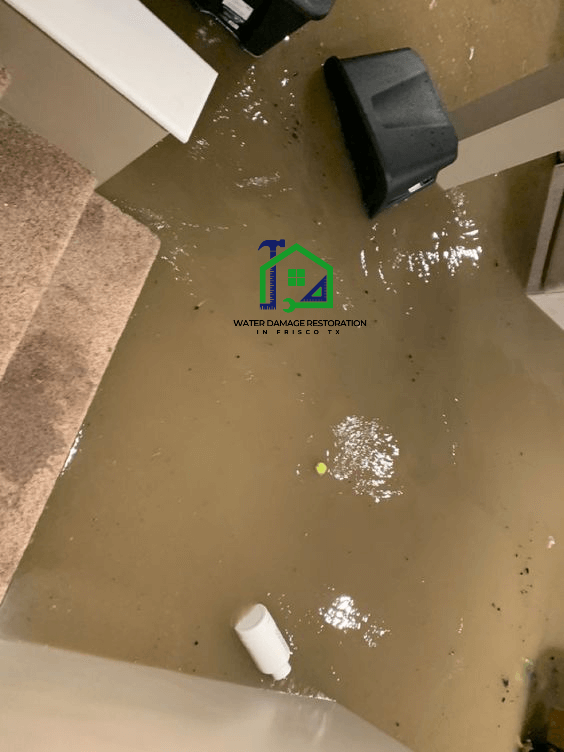The article explains the science behind post-workout muscle soreness, commonly known as Delayed Onset Muscle Soreness (DOMS), which occurs due to microscopic tears in muscle fibers during exercise. This soreness is a natural part of muscle repair and growth but can be managed effectively with strategies like proper hydration, stretching, rest, massage, nutrition, and cold therapy. Hydration helps flush out toxins, stretching improves flexibility and blood flow, while rest is crucial for muscle recovery. Active recovery workouts, massage, and cold therapy can also reduce soreness and enhance recovery.
Spring Valley, CA, United States, 16th Oct 2024 - Understanding post-workout muscle soreness is crucial for anyone who exercises in Spring Valley. This common experience, often referred to as delayed onset muscle soreness (DOMS), occurs when muscles undergo stress during workouts, especially after trying new exercises or increasing intensity. The microscopic tears in muscle fibers lead to inflammation, which can cause discomfort. While soreness is a sign of muscle repair and growth, it’s essential to manage it effectively. Techniques like proper hydration, stretching, and gentle movement can help alleviate discomfort and speed up recovery, allowing you to return to your routine feeling stronger.
What Causes Muscle Soreness After a Workout
Post-workout muscle soreness, commonly known as delayed onset muscle soreness (DOMS), occurs due to tiny tears in muscle fibers caused by physical stress during exercise. This is especially common when engaging in new activities, increasing workout intensity, or trying different movements. The body responds to these tears by triggering inflammation, which leads to soreness. While it may seem like a setback, this discomfort is a natural part of muscle repair and growth. Understanding the root cause of soreness helps in managing expectations and planning for efficient recovery strategies.
In addition to the muscle repair process, soreness can be an indicator of your workout's effectiveness. DOMS highlights that your muscles are adapting to new challenges. However, pushing through the soreness too aggressively may lead to injury. Balancing effort with recovery is crucial. To maintain progress, it’s important to incorporate rest days and allow muscles to heal, ensuring you return to workouts stronger and more resilient.
How Hydration Can Ease Post-Workout Pain
Hydration plays a critical role in managing post-workout muscle soreness. Water helps maintain the body’s fluid balance, which aids in nutrient delivery and waste removal. When muscles are well-hydrated, they can recover more efficiently, reducing the severity of soreness. Dehydration, on the other hand, can exacerbate muscle stiffness and prolong recovery time. Incorporating electrolyte-rich drinks can also help restore lost minerals, making hydration a key part of post-workout care.
Furthermore, staying hydrated before, during, and after exercise helps to flush out toxins that build up in muscles during intense physical activity. Proper hydration improves blood circulation, ensuring that oxygen and nutrients reach the muscles quicker, speeding up the healing process. By prioritizing hydration, you not only ease soreness but also improve your overall workout performance and endurance in the long run.
Stretching to Reduce Muscle Tightness
Stretching is an effective way to alleviate post-workout muscle soreness and prevent further discomfort. Incorporating dynamic stretches before a workout prepares the muscles for exertion, while static stretches afterward help to release built-up tension. Stretching improves blood flow to the muscles, promoting quicker recovery by delivering oxygen and nutrients essential for tissue repair. Additionally, regular stretching increases flexibility, which reduces the risk of injury in future workouts.
Post-workout stretching should focus on the areas worked during the exercise session. Holding each stretch for at least 30 seconds allows the muscles to relax and lengthen, reducing stiffness. This practice not only eases soreness but also enhances muscle flexibility and range of motion. By making stretching a consistent part of your routine, you can speed up recovery, minimize soreness, and enhance overall athletic performance.
The Role of Rest in Muscle Recovery
Rest is a crucial component in managing post-workout muscle soreness and promoting muscle repair. After intense physical activity, the muscles need time to heal from the microtears that occur during exercise. Allowing for adequate rest not only reduces soreness but also helps muscles grow stronger, improving overall workout performance in the long run. Overtraining without sufficient rest can lead to chronic soreness or even injury, highlighting the importance of listening to your body.
Rest doesn’t necessarily mean complete inactivity. Engaging in light activities such as walking or yoga can promote blood flow to sore muscles, speeding up recovery. These gentle movements help remove lactic acid buildup and prevent stiffness. Incorporating rest days into your routine ensures that your muscles have the time they need to rebuild and strengthen, allowing you to return to your workouts with renewed energy and less discomfort.
Using Massage to Relieve Muscle Tension
Massage therapy is a powerful tool for easing post-workout muscle soreness. By applying targeted pressure to sore areas, massage helps reduce muscle tension, improve circulation, and accelerate the healing process. It also aids in breaking down lactic acid, a byproduct of exercise that contributes to soreness. Whether performed by a professional or using self-massage tools like foam rollers, this practice can significantly enhance recovery.
In addition to relieving soreness, massage has long-term benefits for overall muscle health. Regular massages can improve flexibility and range of motion, reducing the likelihood of injury during future workouts. It also promotes relaxation and reduces stress, making it an excellent recovery tool both physically and mentally. Incorporating massage into your post-workout routine can not only alleviate discomfort but also support long-term fitness goals.
Importance of Nutrition for Muscle Recovery
Proper nutrition is essential for repairing and rebuilding muscles after a workout. Protein plays a key role in muscle recovery, providing the necessary amino acids to repair the microscopic tears that occur during exercise. Incorporating high-quality protein sources such as lean meats, eggs, or plant-based alternatives within a few hours after a workout can help reduce soreness and promote muscle growth.
Carbohydrates are equally important, as they replenish glycogen stores depleted during exercise. Glycogen fuels muscle activity, and replenishing it helps sustain energy levels for future workouts. Additionally, healthy fats and antioxidants from fruits and vegetables support overall recovery by reducing inflammation. A balanced post-workout meal ensures that your body has the nutrients it needs to heal quickly, minimize soreness, and prepare for the next exercise session.
Benefits of Active Recovery Workouts
Active recovery workouts are a gentle and effective way to manage post-workout soreness. Rather than engaging in high-intensity exercises, active recovery involves low-impact activities such as walking, swimming, or yoga. These exercises keep the body moving, promote blood circulation, and help flush out toxins from muscles, which can accelerate the recovery process.
Active recovery also helps maintain flexibility and mobility, preventing stiffness after intense workouts. By incorporating these light activities into your routine, you can ease muscle soreness without overexerting yourself. This approach allows you to stay active and consistent with your fitness goals, even on days when you're recovering from a more strenuous workout.
Cold Therapy for Reducing Inflammation
Cold therapy, such as ice baths or cold packs, is a widely-used method for managing post-workout muscle soreness. The cold helps reduce inflammation and numb the affected muscles, providing relief from discomfort. Applying ice or cold packs to sore areas for 15-20 minutes after a workout can significantly reduce swelling and pain, helping muscles recover faster.
This method works by constricting blood vessels, which reduces blood flow to the affected area, slowing the inflammatory response. Once the cold therapy is removed, blood flow returns, flushing out toxins and delivering nutrients to aid in recovery. Incorporating cold therapy into your post-workout routine can effectively manage soreness and accelerate your return to full strength.
Conclusion
Understanding the science behind post-workout muscle soreness can help you take the right steps to ease discomfort and speed up recovery. From hydration and electrolyte balance to proper sleep and muscle repair techniques, taking care of your body after intense physical activity is crucial for long-term fitness progress. By incorporating these strategies into your routine, you can reduce soreness and get back to your workouts more efficiently.
At Chronic Gains Collective in Spring Valley, CA, we’re passionate about helping you achieve your fitness goals while keeping your body in optimal condition. Prioritizing recovery is just as important as the workouts themselves, and with the right approach, you can minimize soreness and continue to make gains. Remember, a well-rested and well-nourished body is key to consistent performance and overall well-being.
Chronic Gains Collective
+16197271078
https://chronicgainscollective.com/
Media Contact
Organization: Chronic Gains Collective
Contact Person: Chronic Gains Collective
Website: https://chronicgainscollective.com/
Email: Send Email
Contact Number: +16197271078
Address:10174 Austin Drive, #2406 Spring Valley, CA. 91979
City: Spring Valley
State: CA
Country:United States
Release id:18515
The post The Science of Post Workout Muscle Soreness appeared first on King Newswire. It is provided by a third-party content provider. King Newswire makes no warranties or representations in connection with it.









